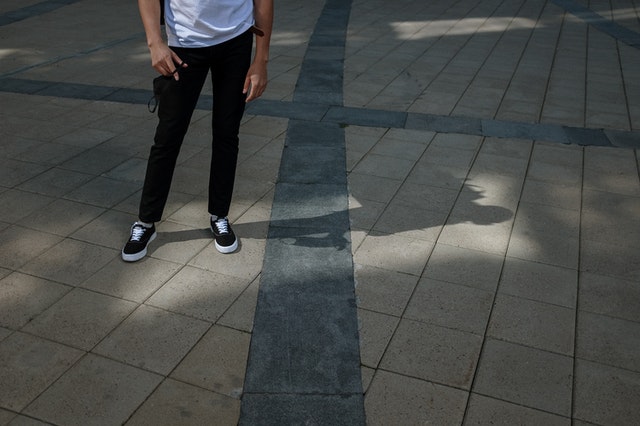Have you heard of overdyed jeans? They’ve become a popular alternative to traditional jeans. All jeans, of course, are dyed. They are made of denim, which is cotton with a warp-faced weaving pattern. In its natural state, cotton is white. To achieve a different color, such as indigo or black, it’s dyed. Overdyed jeans are simply dyed more heavily than their traditional counterparts. For a better understanding of overdyed jeans why they’ve become so popular, keep reading.
What Are Overdyed Jeans?
Overdyed jeans are characterized by their use of a large amount of dye during production. Nearly all jeans are dyed during production. Dyeing, of course, involves the use of colored liquid, known as dye, to change the color of a garment. In its natural state, cotton is white. To produce jeans in a different color, manufacturers must dye them. Overdyed jeans are simply exposed to a larger amount of dye during production than traditional jeans.
Breaking Down the Dyeing Process
In the past, most jeans were dyed with natural indigo. Natural indigo is a type of dark blue dye that’s derived from the dried leaves of an Asian plant called Indigofera tinctoria. Historians believe that natives have used this plant to create dye for centuries, with some of the earliest reports of its use dating back to the 8th century BC. In more recent years, though, natural indigo has been replaced with synthetic indigo.
Synthetic indigo features a similar dark blue color as natural indigo. While natural indigo is derived from plant leaves, however, synthetic indigo is an artificial dye. Synthetic indigo consists of a similar color, and it’s used for the same purpose. The only difference is that it’s synthetic, whereas natural indigo is organic.
How Much Dye Is Used to Make Overdyed Jeans?
You might be wondering how much dye is used to make overdyed jeans. It’s estimated that approximately 20,000 tons of synthetic indigo are produced globally, most of which is used to make jeans. With that said, traditional jeans only require a few grams of artificial indigo. Manufacturers can make a pair of traditional blue-colored jeans using just a few grams of this common dye.
Overdyed jeans aren’t the same as traditional jeans. They are made of the same denim material, but they are exposed to a larger amount of dye during production. Rather than just a few grams, manufacturers may use 10 or more grams of dye to make them. All of this dye helps to create a deeper color, which is how overdyed jeans are distinguished from traditional jeans.

What Colors Are Overdyed Jeans Available In?
Overdyed jeans are available in dozens of colors. Perhaps the most common and popular color is indigo. Indigo is simply dark blue. To achieve an indigo color, synthetic indigo is used. Synthetic indigo is the main dye that’s used in the production of all indigo-colored jeans, including traditional and overdyed jeans.
With that said, indigo isn’t the only color in which overdyed jeans are available. Overdyed jeans can feature other colors. The color of a pair of overdyed jeans is determined by its dye. There are other types of dye besides synthetic indigo. Overdyed jeans are exposed to these alternative types of dye. The color of the dye, of course, will ultimately determine the color of the overdyed jeans.
While indigo is the most common in which overdyed jeans are available, black isn’t far behind. There are indigo overdyed jeans, and there are black overdyed jeans. Black overdyed jeans feature a jet-black color. They are made using a similar production process as their indigo counterparts. Rather than being exposed to synthetic indigo, though, black overdyed jeans are exposed to synthetic black dye.
Benefits of Choosing Overdyed Jeans
When compared to traditional jeans, overdyed jeans are less likely to fade. Fading is a common phenomenon that occurs with nearly all garments. If a garment has been dyed, it may fade. Fading typically doesn’t happen overnight. Nonetheless, the more you wash and dry a garment, the greater its risk of fading. The good news is that you don’t have to worry about fading if you choose overdyed jeans.
Overdyed jeans offer a high level of protection against fading because of their production process. They are produced using a large amount of dye. During production, the denim material is soaked in a solution of distilled water and dye. As the denim soaks up the dye, it changes color.
You can find overdyed jeans available in stretch styles. Known as stretch overdyed jeans, they are made of an elastic material. Stretch overdyed jeans still contain denim. But they also contain an elastic material like lycra or polyester. The presence of this elastic material changes their physical properties. Rather than being rigid, stretch overdyed jeans are soft and elastic.
With overdyed jeans, you can take advantage of their deep color to achieve brilliantly stylish and attractive outfits. All jeans are colored. Overdyed jeans simply feature a deeper color than their traditional counterparts. Whether they are indigo, black, red or any other color, they offer a deeper color than traditional jeans. This deep color means that they’ll stand out in your outfits while promoting a higher level of aesthetics.
In addition to stretch styles, overdyed jeans are available in custom sizes. Custom-sized overdyed jeans don’t feature a generic length and waist measurement. Instead, they are customized to fit your body. You can order a pair of custom-sized overdyed jeans here at MakeYourOwnJeans. When placing an order, you’ll have the option of entering your body measurements. We’ll use these measurements to create a pair of overdyed jeans that fit perfectly.
In Conclusion
Jeans are considered overdyed if they were produced using a large amount of dye. Nearly all jeans are dyed during production, They are made of denim. Denim, of course, consists of white, which is white in its natural state. To achieve a different color, the denim must be exposed to a pigment-based liquid known as dye. Overdyed jeans are simply made using a larger amount of dye than traditional jeans.











